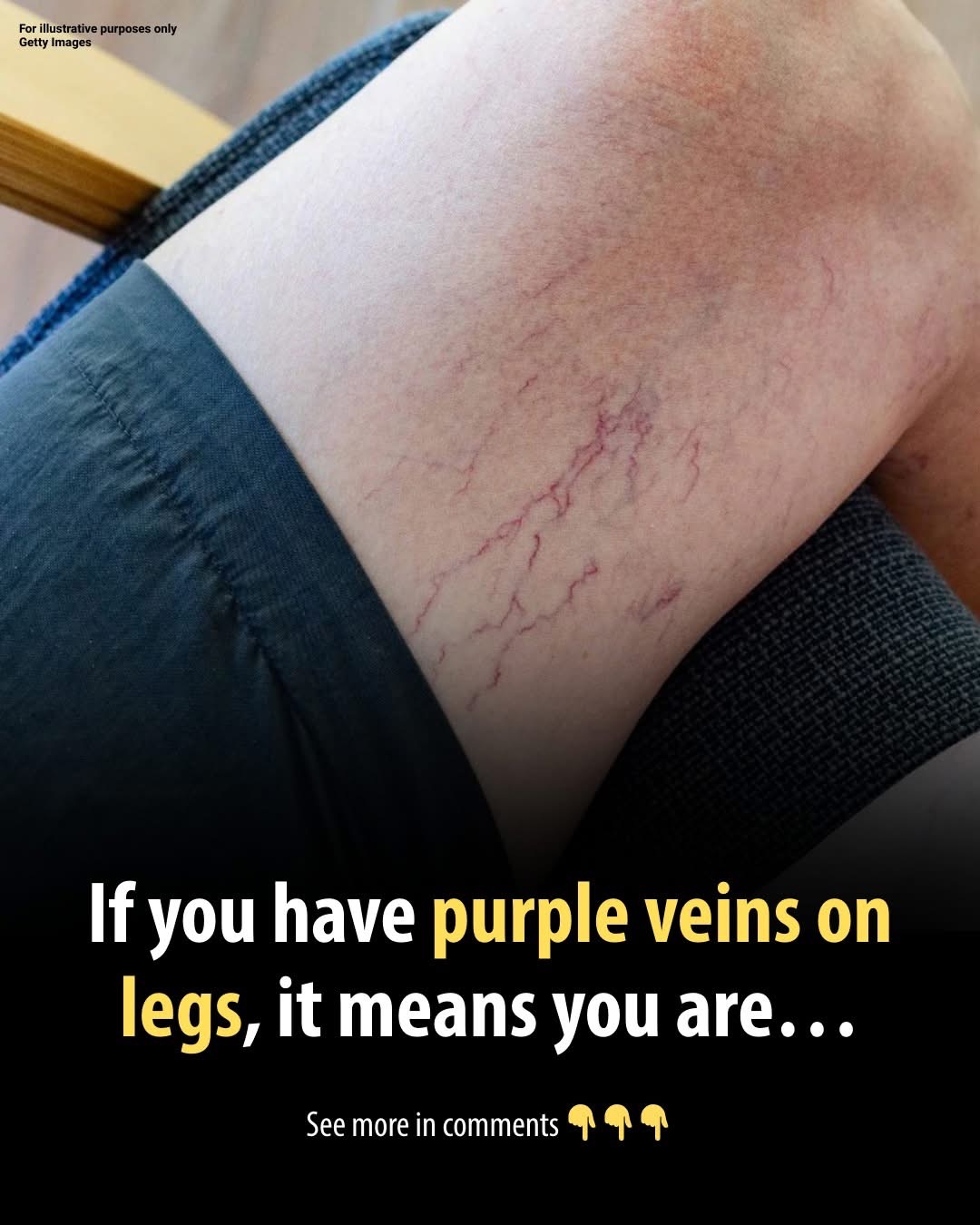Ever noticed bluish or purple veins appearing on your legs and wondered if it’s something to be concerned about? You’re not alone. These visible veins—sometimes flat, sometimes raised—are incredibly common, especially among older adults or anyone who spends long hours sitting or standing.
While they may start off as a cosmetic nuisance, purple leg veins can evolve into something more serious if left unchecked.
Let’s explore what causes them, when they signal a deeper health issue, and what you can do to prevent or manage them.
What Causes Purple Veins on the Legs?
There’s more than one reason these veins appear. Some of the most common include:
🔹 Genetics
If your parents or grandparents had visible veins, chances are higher you will too. Hereditary weakness in vein walls and valves plays a big role.
🔹 A Sedentary Lifestyle
Sitting or standing for extended periods reduces circulation, causing blood to pool in the legs. Over time, this increases vein pressure.
🔹 Excess Weight
Carrying extra weight puts additional strain on your veins, which can weaken the valves that keep blood flowing upward.
Could Purple Veins Be a Sign of Something More Serious?
Sometimes, yes. While many cases are harmless, persistent or worsening purple veins may point to a deeper issue, such as:
Chronic Venous Insufficiency (CVI): When the vein valves don’t function properly, blood backs up, causing veins to stretch and darken.
Vascular Blockages or Injuries: Damage or trauma can trigger temporary or long-term changes in vein appearance.
Heart or Circulatory Conditions: If leg vein changes come with chest pain or shortness of breath, it could be heart-related.
Type 2 Diabetes: Poor blood sugar control can damage blood vessels, making veins more visible and fragile.
➡️ Important: Untreated vein issues may progress into complications like venous ulcers, deep vein thrombosis (DVT), or phlebitis (vein inflammation).

Leave a Reply